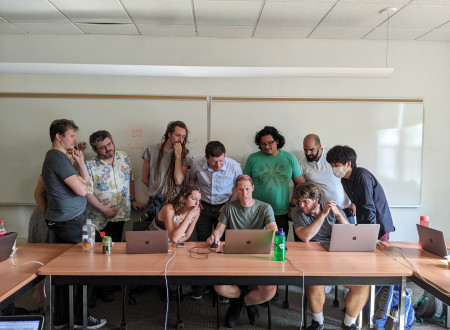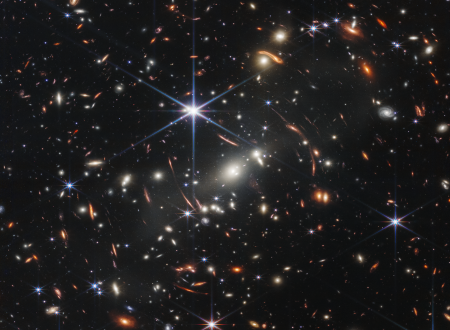A Slovenian scientist helped bring about a new discovery using the James Webb telescope
- Ministry of Education, Science and Sport
Maruša Bradač, an astrophysicist from the Faculty of Mathematics and Physics at the University of Ljubljana, and recipient of a prestigious European Research Council (ERC) project, is a member of the international research group CANCUS (Canadian NIRISS Unbiased Cluster Survey), which has succeeded in identifying the most distant globular star clusters ever discovered using the James Webb Space Telescope (JWST). These star clusters are important as they consist of millions of stars, and may represent the remains of the first and oldest stars in the universe.
An early analysis of the Webb's first deep field image, which depicts some of the universe's earliest galaxies, was published in The Astrophysical Journal Letters.
In 2021 Maruša Bradač also received an ERC project for established researchers, FIRSTLIGHT – Exploring Cosmic Dawn with the James Webb Space Telescope, which she will carry out at the Faculty of Mathematics and Physics of the University of Ljubljana. Using a special camera and spectograph, her research team have already succeeded in finding the most distant star clusters, thereby revealing something about the formation of the first stars.
Following this great achievement she said: “the James Webb telescope was made for studying the first galaxies that came about in the universe. We focused on the Sparkler galaxy, which is not the most distant galaxy we have observed, but it does consist of globular star clusters that are some of the oldest we know and that came about when our universe was young”.
“We at the ministry are pleased that Slovenian researchers are helping bring about such important scientific achievements and discoveries, as this shows that scientific excellence in Slovenia is on a globally comparable level, and that our research community’s relatively small size does not prevent us from participating in the greatest scientific discoveries and in large international research groups. We are also pleased that the researcher who played a part in this discovery is someone who came back to work in the Slovenian research organisation, as our ministry has and will introduce measures to make the Slovenian scientific research system more attractive for Slovenian researchers abroad,” said the state secretary, Dr. Matjaž Krajnc.



